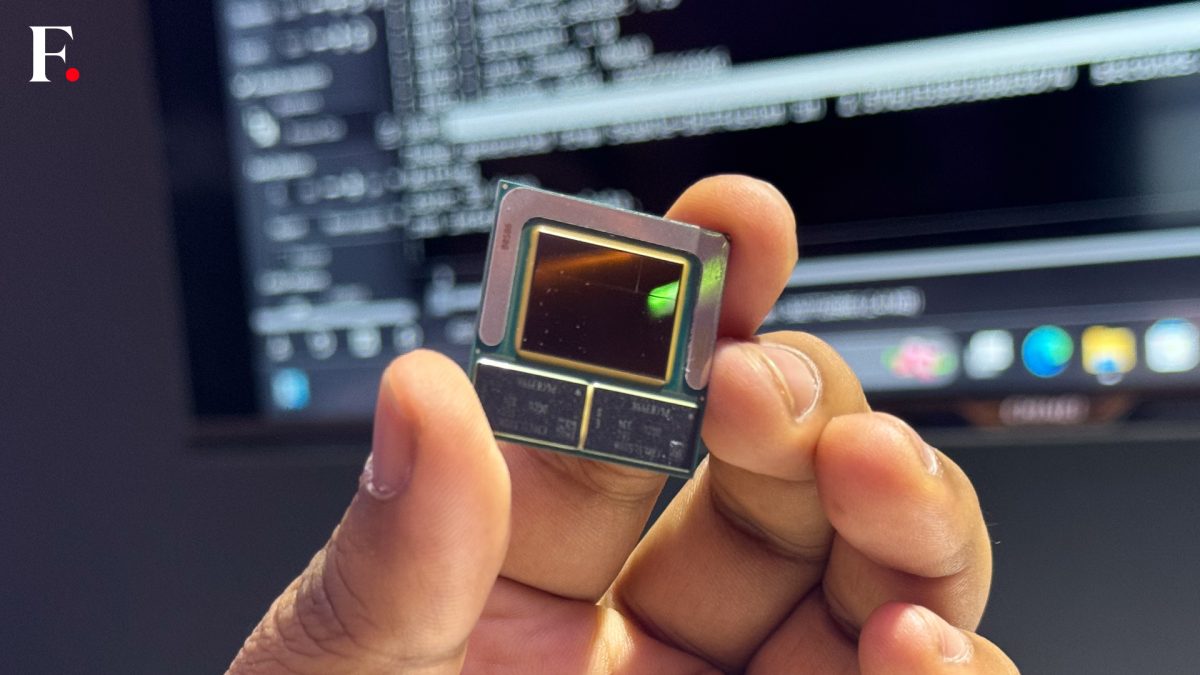How Good Is ChatGPT at Coding, Really?

A study published in the June issue of IEEE Transactions on Software Engineering
evaluated the code produced by OpenAI’s ChatGPT in terms of functionality,
complexity and security. The results show that ChatGPT has an extremely broad
range of success when it comes to producing functional code—with a success rate
ranging from anywhere as poor as 0.66 percent and as good as 89
percent—depending on the difficulty of the task, the programming language, and a
number of other factors. While in some cases the AI generator could produce
better code than humans, the analysis also reveals some security concerns with
AI-generated code. ... Overall, ChatGPT was fairly good at solving problems in
the different coding languages—but especially when attempting to solve coding
problems that existed on LeetCode before 2021. For instance, it was able to
produce functional code for easy, medium, and hard problems with success rates
of about 89, 71, and 40 percent, respectively. “However, when it comes to the
algorithm problems after 2021, ChatGPT’s ability to generate functionally
correct code is affected. It sometimes fails to understand the meaning of
questions, even for easy level problems,” Tang notes.
What can devs do about code review anxiety?
A lot of folks reported that either they would completely avoid picking up code
reviews, for example. So maybe someone's like, “Hey, I need a review,” and folks
are like, “I'm just going to pretend I didn't see that request. Maybe somebody
else will pick it up.” So just kind of completely avoiding it because this
anxiety refers to not just getting your work reviewed, but also reviewing other
people's work. And then folks might also procrastinate, they might just kind of
put things off, or someone was like, “I always wait until Friday so I don't have
to deal with it all weekend and I just push all of that until the very last
minute.” So definitely you see a lot of avoidance. ... there is this
misconception that only junior developers or folks just starting out experience
code review anxiety, with the assumption that it's only because you're
experiencing the anxiety when your work is being reviewed. But if you think
about it, anytime you are a reviewer, you're essentially asked to contribute
your expertise and so there is an element of, “If I mess up this review, I was
the gatekeeper of this code. And if I mess it up, that might be my fault.” So
there's a lot of pressure there.
Securing the Growing IoT Threat Landscape

What’s clear is that there should be greater collective responsibility between
stakeholders to improve IoT security outlooks. A multi-stakeholder response is
necessary, leading to manufacturers prioritising security from the design phase,
to governments implementing legislation to mandate responsibility. Currently,
some of the leading IoT issues relate to deployment problems. Alex suggests that
IT teams also need to ensure default device passwords are updated and complex
enough to not be easily broken. Likewise, he highlights the need for monitoring
to detect malicious activity. “Software and hardware hygiene is essential,
especially as IoT devices are often built on open source software, without any
convenient, at scale, security hardening and update mechanisms,” he highlights.
“Identifying new or known vulnerabilities and having an optimised testing and
deployment loop is vital to plug gaps and prevent entry from bad actors.” A
secure-by-design approach should ensure more robust protections are in place,
alongside patching and regular maintenance. Alongside this, security features
should be integrated from the start of the development process.
Beyond GPUs: Innatera and the quiet uprising in AI hardware

“Our neuromorphic solutions can perform computations with 500 times less
energy compared to conventional approaches,” Kumar stated. “And we’re seeing
pattern recognition speeds about 100 times faster than competitors.” Kumar
illustrated this point with a compelling real-world application. ... Kumar
envisions a future where neuromorphic chips increasingly handle AI workloads
at the edge, while larger foundational models remain in the cloud. “There’s a
natural complementarity,” he said. “Neuromorphics excel at fast, efficient
processing of real-world sensor data, while large language models are better
suited for reasoning and knowledge-intensive tasks.” “It’s not just about raw
computing power,” Kumar observed. “The brain achieves remarkable feats of
intelligence with a fraction of the energy our current AI systems require.
That’s the promise of neuromorphic computing – AI that’s not only more capable
but dramatically more efficient.” ... As AI continues to diffuse into every
facet of our lives, the need for more efficient hardware solutions will only
grow. Neuromorphic computing represents one of the most exciting frontiers in
chip design today, with the potential to enable a new generation of
intelligent devices that are both more capable and more sustainable.
Artificial intelligence in cybersecurity and privacy: A blessing or a curse?

AI helps cybersecurity and privacy professionals in many ways, enhancing their
ability to protect systems, data, and users from various threats. For
instance, it can analyse large volumes of data, spot anomalies, and identify
suspicious patterns for threat detection, which helps to find unknown or
sophisticated attacks. AI can also defend against cyber-attacks by analysing
and classifying network data, detecting malware, and predicting
vulnerabilities. ... The harmful effects of AI may be fewer than the positive
ones, but they can have a serious impact on organisations that suffer from
them. Clearly, as AI technology advances, so do the strategies for both
protecting and compromising digital systems. Security professionals should not
ignore the risks of AI, but rather prepare for them by using AI to enhance
their capabilities and reduce their vulnerabilities. ... As attackers are
increasingly leveraging AI, integrating AI defences is crucial to stay ahead
in the cybersecurity game. Without it, we risk falling behind.” Consequently,
cybersecurity and privacy professionals, and their organisations, should
prepare for AI-driven cyber threats by adopting a multi-faceted approach to
enhance their defences while minimising risks and ensuring ethical use of
technology.
Intel is betting big on its upcoming Lunar Lake XPUs to change how we think of AI in our PCs
)
Designed with power efficiency in mind, the Lunar Lake architecture is ideal
for portable devices such as laptops and notebooks. These processors balance
performance and efficiency by integrating Performance Cores (P-cores) and
Efficiency Cores (E-cores). This combination allows the processors to handle
both demanding tasks and less intensive operations without draining the
battery. The Lunar Lake processors will feature a configuration of up to eight
cores, split equally between P-cores and E-cores. This design aims to improve
battery life by up to 60 per cent, positioning Lunar Lake as a strong
competitor to ARM-based CPUs in the laptop market. Intel anticipates that
these will be the most efficient x86 processors it has ever developed. ... A
major highlight of the Lunar Lake processors is the inclusion of the new Xe2
GPUs as integrated graphics. These GPUs are expected to deliver up to 80 per
cent better gaming performance compared to previous generations. With up to
eight second-generation Xe-cores, the Xe2 GPUs are designed to support
high-resolution gaming and multimedia tasks, including handling up to three 4K
displays at 60 frames per second with HDR.
Cyber Threats And The Growing Complexity Of Cybersecurity

Irvine envisions a future where the cybersecurity industry undergoes
significant disruption, with a greater emphasis on data-driven risk
management. “The cybersecurity industry is going to be disrupted severely. We
start to think about cybersecurity more as a risk and we start to put more
data and more dollars and cents around some of these analyses,” she predicted.
As the industry matures, Dr. Irvine anticipates a shift towards more
transparent and effective cybersecurity solutions, reducing the prevalence of
smoke and mirrors in the marketplace. She also claims that “AI and LLM's will
take over jobs. There will be automation, and we're going to need to upskill
individuals to solve some of these hard problems. It's just a challenge for
all of us to figure out how.” Kosmowski also remarked that the industry must
remain on top of what will continue to be a definitive risk to organizations,
“Over 86% of companies are hybrid and expect to remain hybrid for the
foreseeable future, plus we know IT proliferation is continuing to happen at a
pace that we have never seen before.”
The blueprint for data center success: Documentation and training

In any data center, knowledge is a priceless asset. Documenting
configurations, network topologies, hardware specifications, decommissioning
regulations, and other items mentioned above ensures that institutional
knowledge is not lost when individuals leave the organization. So, no need to
panic once the facility veteran retires, as you’ll already have all the
information they have! This information becomes crucial for staff, maintenance
personnel, and external consultants to understand every facet of the systems
quickly and accurately. It provides a more structured learning path,
facilitates a deeper understanding of the data center's infrastructure and
operations, and allows facilities to keep up with critical technological
advances. By creating a well-documented environment, facilities can rest
assured knowing that authorized personnel are adequately trained, and vital
knowledge is not lost in the shuffle, contributing to overall operational
efficiency and effectiveness, and further mitigating future risks or
compliance violations.
Why Knowledge Is Power in the Clash of Big Tech’s AI Titans

The advanced AI models currently under development across big tech -- models
designed to drive the next class of intelligent applications -- must learn
from more extensive datasets than the internet can provide. In response, some
AI developers have turned to experimenting with AI-generated synthetic data, a
risky proposition that could potentially put an entire engine at risk if even
a small semblance of the learning model is inaccurate. Others have pivoted to
content licensing deals for access to useful, albeit limited, proprietary
training data. ... The real differentiating edge lies in who can develop a
systemic means of achieving GenAI data validation, integrity, and reliability
with a certificated or “trusted” designation, in addition to acquiring expert
knowledge from trusted external data and content sources. These two twin
pillars of AI trust, coupled with the raw computing and computational power of
new and emerging data centers, will likely be the markers of which big tech
brands gain the immediate upper hand.
Should Sustainability be a Network Issue?

The beauty of replacing existing network hardware components with
energy-efficient, eco-friendly, small form factor infrastructure elements
wherever possible is that no adjustments have to be made to network
configurations and topology. In most cases, you're simply swapping out
routers, switches, etc. The need for these equipment upgrades naturally occurs
with the move to Wi-Fi 6, which requires new network switches, routers, etc.,
in order to run at full capacity. Hardware replacements can be performed on a
phased plan that commits a portion of the annual budget each year for network
hardware upgrades ... There is a need in some cases to have discrete computer
networks that are dedicated to specific business functions, but there are
other cases where networks can be consolidated so that resources such as
storage and processing can be shared. ... Network managers aren’t professional
sustainability experts—but local utility companies are. In some areas of the
U.S., utility companies offer free onsite energy audits that can help identify
areas of potential energy and waste reduction.
Quote for the day:
"It takes courage and maturity to know
the difference between a hoping and a wishing." --
Rashida Jourdain
No comments:
Post a Comment